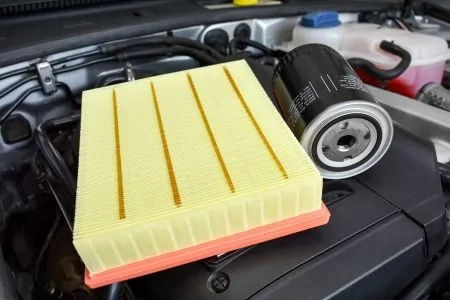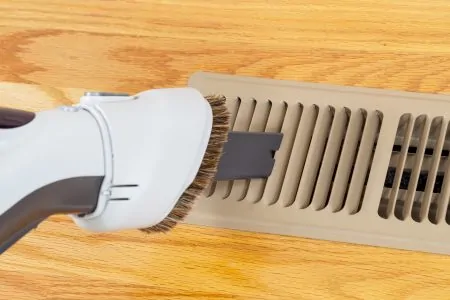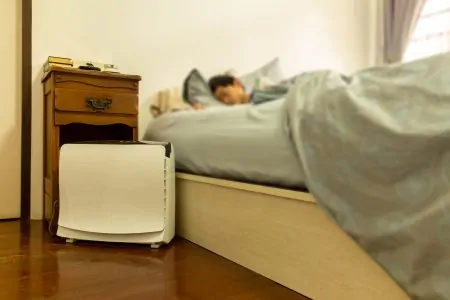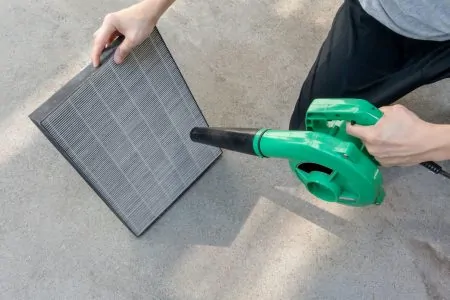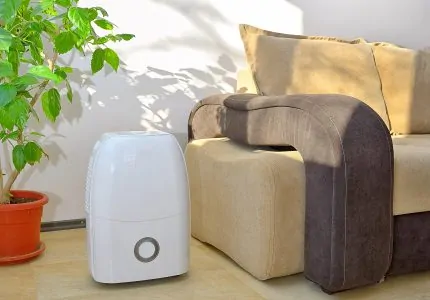Buying an air purifier can be tricky. There are so many features to consider, and many of those are mind-boggling.
One feature that you may not be familiar with is the CADR rating. What does this mean? How does it affect an air purifier’s efficiency? Is it important to choose one with the highest setting?
We’ll answer all these questions. Keep reading.
Key Takeaways
- CADR (Clean Air Delivery Rate) measures an air purifier’s effectiveness against pollen, dust, and smoke.
- A good CADR rating for an air purifier is at least 150, with higher ratings being more effective.
- CADR ratings don’t measure how well an air purifier removes gases or tiny particles, crucial for allergies and asthma sufferers.
- For better filtration, consider air purifiers with True HEPA or medical-grade HEPA filters.
What Is CADR Rating?
CADR stands for Clean Air Delivery Rate. It’s a rating assigned to an air purifier when independently tested by the AHAM (Association of Home Appliance Manufacturers). The AHAM has been hard at work, measuring the CADR of purifiers since the 1980s.
The CADR is an easy way for consumers to evaluate an air purifier. The rating only indicates the volume of clean, filtered air that the specific air purifier will produce.
Is the CADR rating the same for air purifiers that use different purification methods, such as ionizers or HEPA filters? The answer is yes. CADR ratings are valid regardless of the purification technology used.
The CADR simply is a rating of the end results, not how the specific unit purifies the air.
When looking at the CADR rating, it’s important to note the room size the air purifier was designed for. A unit with a CADR rating of 200 cfm (cubic feet per minute) won’t do as well as an air purifier with a rating of 300 cfm.
It’s safe to say that the air purifier with the highest CADR rating is the most powerful. However, there are a few things one must know before settling for the highest CADR.
Keep In Mind
How to Determine CADR
The air purifier is tested through the ANSI/AHAM AC-1 standard. This process has specific requirements for the air purifier to be certified. The requirements include the following:
- The air purifier is tested in a room or chamber that measures 1008 cubic feet.
- Contaminants in that room are measured before the testing to give an accurate result.
- The air purifier is activated for 20 minutes, while the number of contaminants is periodically measured.
- The decrease in contaminants must be compared to the regular decay rate.
Once the test is done, the testers will give the air purifier its rating. The CADR rating is measured in cubic feet per minute (cfm). The EPA explains that using a purifier with a CADR of 250 would be the same as adding 250 cubic feet of clean air per minute.
CADR Rating Categories
You’ll likely notice three CADR ratings when researching a potential air purifier. This is because each unit has to test its effectiveness against three common indoor air pollutants to achieve the AHAM seal of approval. You’ll find three categories: tobacco smoke, dust, and pollen.
The CADR rating can vary, but one unit usually has close ratings between the three categories. However, there’s a limit and minimum number for each contaminant category:
- Dust: 10 to 400 CADR.
- Pollen: 10 to 450 CADR.
- Tobacco smoke: 10 to 450 CADR.
Experts will generally recommend air purifiers with a CADR rating above 150. Anything above 350 is highly effective, whereas units with a rating under 100 won’t perform well (1).
How Accurate Are CADR Ratings?
CADR ratings are a good starting point to know whether an air purifier is effective or not. CADR testing has a long history and is recognized by reputable organizations like the EPA and FTC. Independent organizations like Consumers Union also trust it.
Because of the recognition, you can and should trust the CADR rating of an air purifier. If anything, it’s a good starting point when you’re shopping for an air purifier.
CADR Limits and What You Should Know
When looking at the CADR rating of an air purifier, it’s important to know a few points:
- Small particles aren’t included: The CADR rating tells you the overall performance of the particular unit. However, it won’t tell you its effectiveness against smaller particles. The smallest pollutants are likely the most troublesome if you suffer from allergies or asthma. Some units are highly effective at removing larger particles — therefore scoring a high rating — but fail to remove the tiniest particles.
- Gas isn’t measured: You likely noticed that CADR rating only covers three categories, and gases aren’t included. However, gases, such as VOCs, can be hazardous to the health of you and your family. Gases require a different filtration method than solid particles, such as activated carbon.
- Air purifiers run on the highest setting: When tested, the air purifier will be set on its highest setting. However, most homeowners avoid the highest setting while in the room due to noise levels.
- Won’t show wear: Similarly to other appliances, air purifiers will wear over time — some quicker than others. Because the test is so short (20 minutes), it won’t tell you how or when the unit will decline in effectiveness.
Experts say that the AHAM’s CADR rating is more important regarding cheaper air purifiers. When searching for a unit, you’ll likely notice that not all manufacturers show a CADR rating. Many high-end units manufactured by well-respected companies often choose not to give their products a CADR rating.
CADR Critics and Controversies
Despite being recognized as an accurate way of measuring the performance of air cleaners, the CADR method has received criticism.
In 2003, The Sharper Image sued Consumer Reports’s magazine publisher, Consumer’s Union, based on a bad review. The Sharper Image is the creator of one of the market’s most popular home air purifiers: the Ionic Breeze (2).
The Ionic Breeze used an ionizer to clean the air, but as Consumer Reports compared it to the traditional HEPA filters, it fell rather short. Consumer Reports found its CADR rating to be very low. To make matters worse, the magazine also found that it actually produced significant amounts of ozone.
What's The Deal With Ozone?
FAQs
The Takeaway
An air purifier’s Clean Air Delivery Rate (CADR) is an excellent way to tell how a unit will perform. An air purifier is tested for effectiveness against three common air pollutants: pollen, dust, and smoke. Experts recommend choosing one with a CADR rating of at least 150.
However, the CADR rating won’t tell you if a unit removes gases or how well it performs over time. So, choosing an air purifier with a high CADR rating won’t be enough if you have allergies or asthma.
A high CADR rating won’t tell you if the unit removes tiny particles. So we highly recommend choosing an air purifier with a True HEPA or medical-grade HEPA filter, as these will remove the smallest pollutants.





